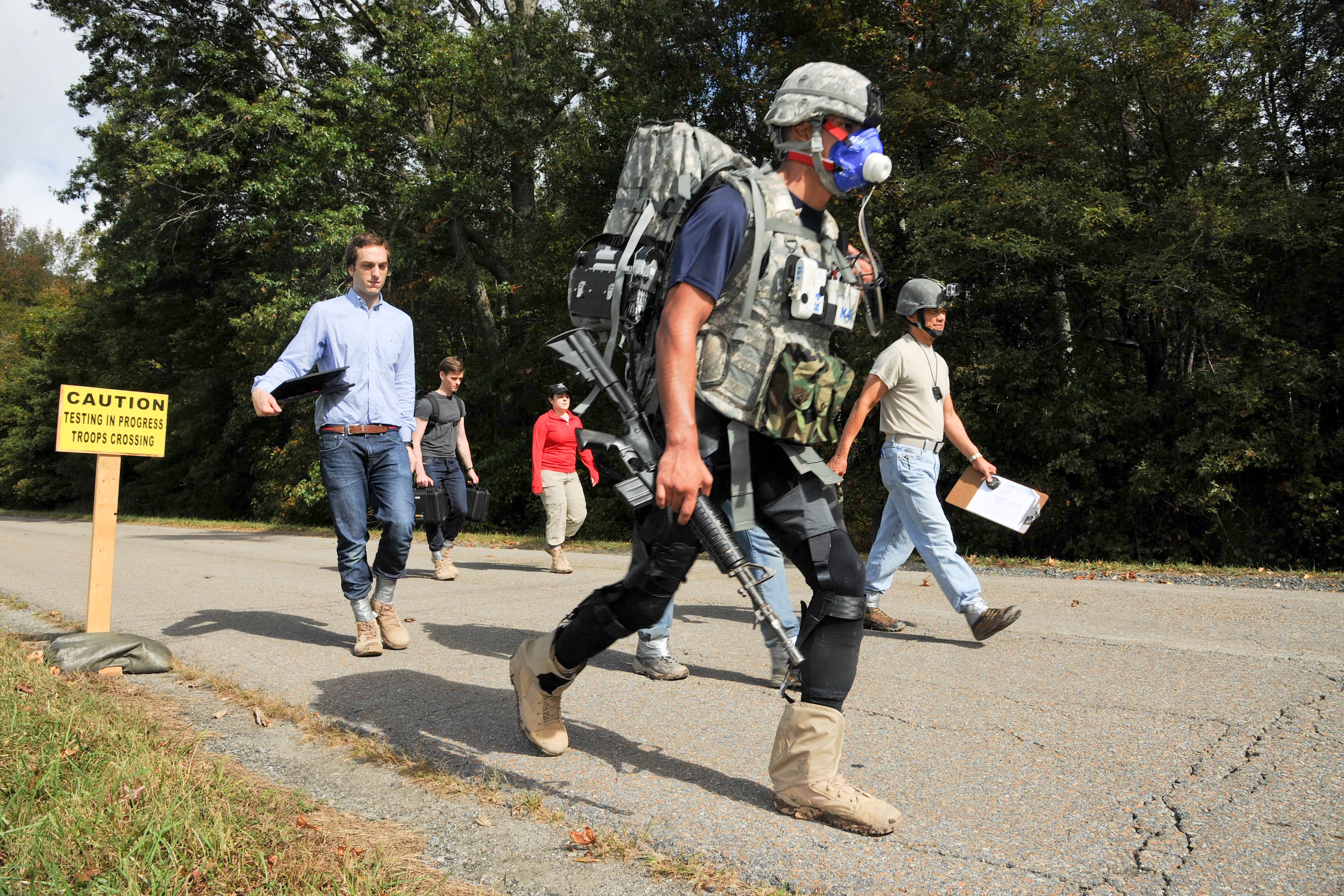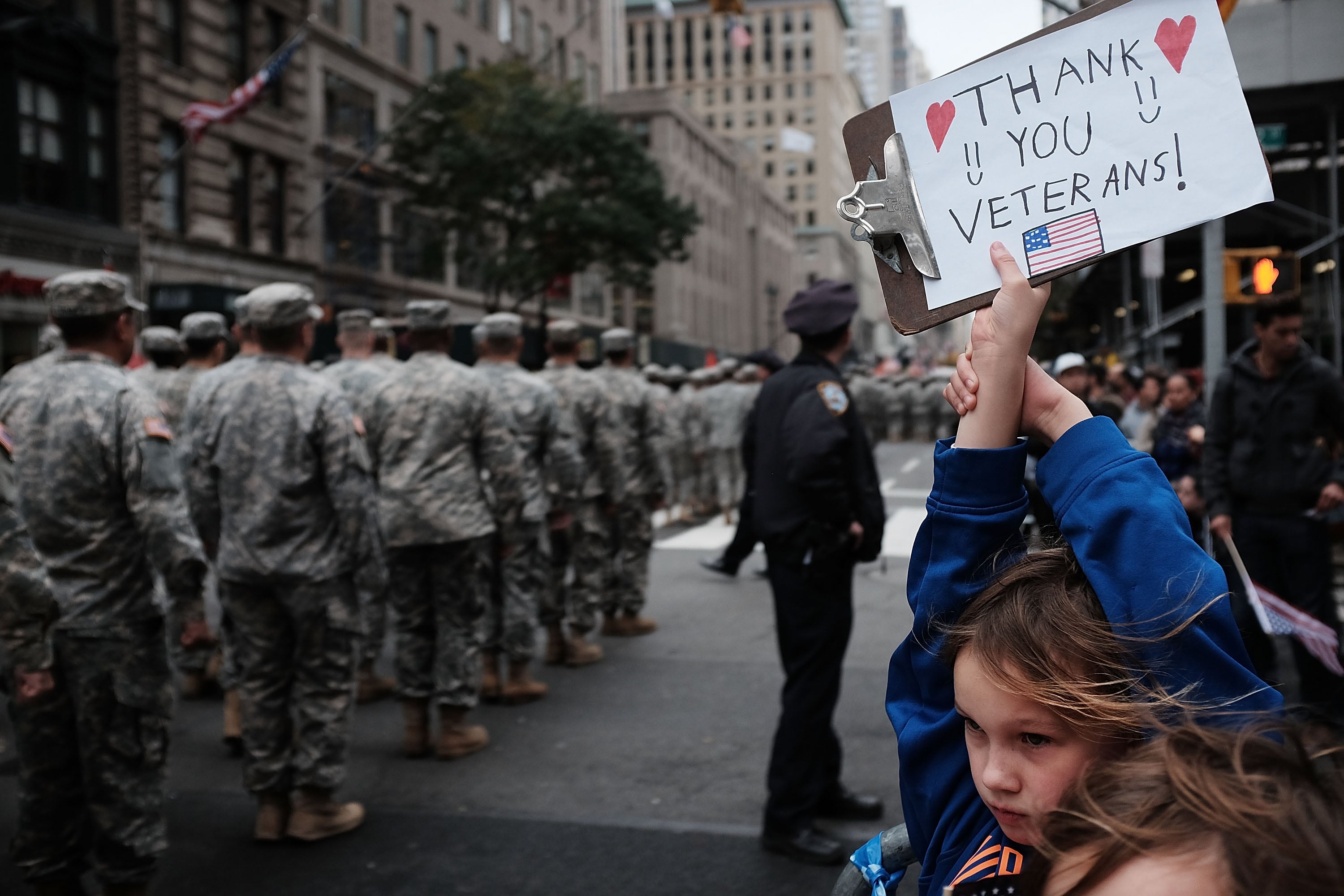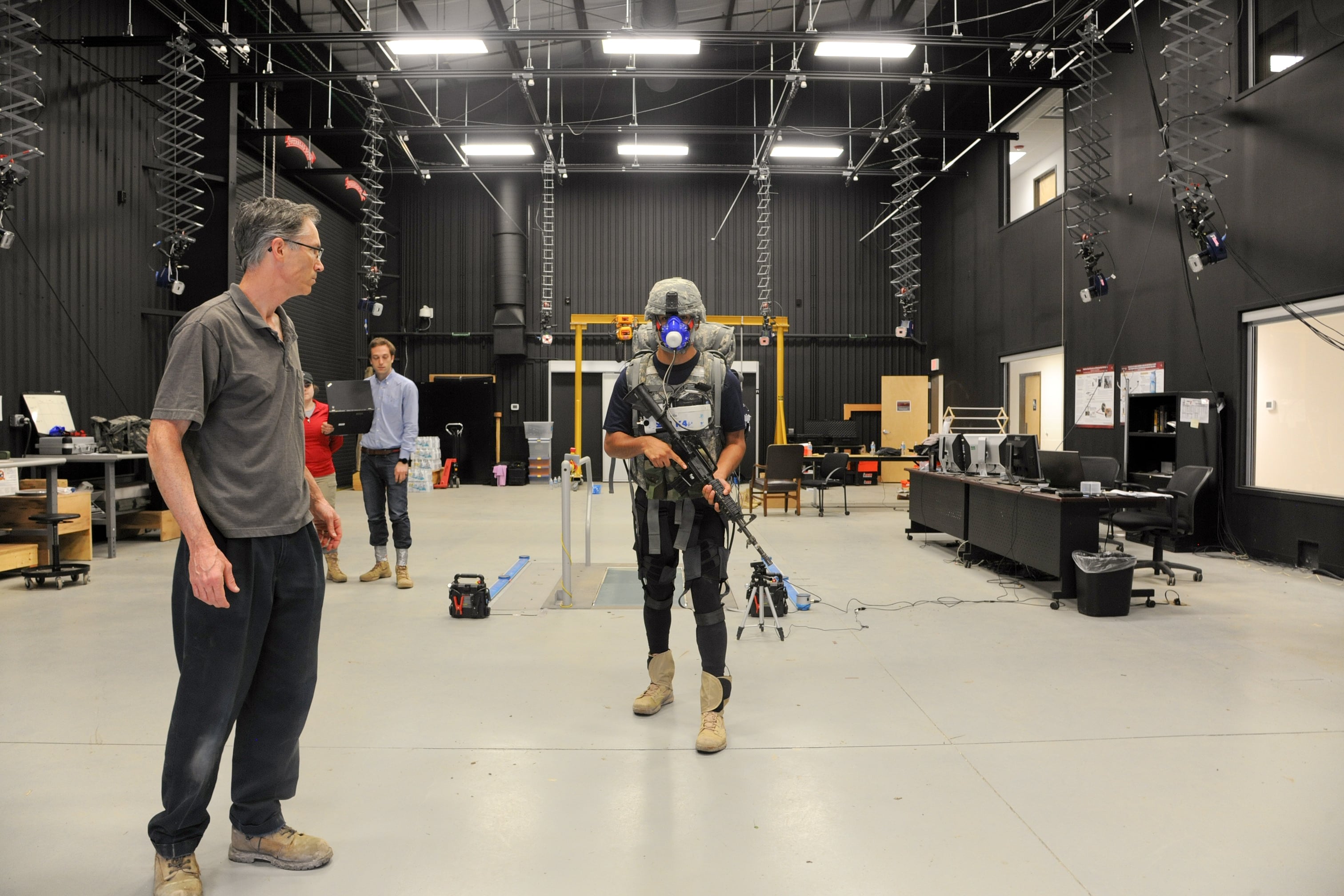The futuristic exosuits being tested by Army researchers won't help soldiers outrun locomotives, and it'll still take more than a single bound to clear a tall building.
Feedback from testers has been positive, DARPA and Army officials said, especially after the soldiers have time to get used to wearing the devices. But comfort isn't the only issue under review, and the data analysis required to gauge the performance of such suits may be a heavier lift than the packs being lugged around the Aberdeen woods.
Precision performance
Rules for what the prototypes must look like are flexible to allow for innovation, but the final version likely will resemble a wet suit, only with a system attached designed to deliver the right force to the right muscle or joint at the right time to ease a soldier's workload.

Spc. Rafael Boza, a soldier from the 1st Infantry Division, tests the prototype smart suit on a three-mile course of paved roads and rough terrain Oct. 3 at Aberdeen Proving Ground, Md.
Photo Credit: Tom Faulkner, RDECOM
Because of the weight and wattage limitations put on the system by DARPA, researchers must find ways to benefit the wearer without excess power.
"We're trying to understand what are the most efficient times in the walking cycle to add energy," Walsh said. "Do we really understand those moments?"
Makers of Air Legs told CBS News in a Nov. 11 report they had been able to reduce exertion, or "metabolic load," by 10 percent so far, and that reaching the 25 percent threshold would mean a soldier wearing the device could run a mile in four minutes.
Track times aren't part of the DARPA metrics. Walsh said the Harvard group's prototype has "seen muscle activity being reduced in the key areas, and we've seen positive effect in the metabolic areas," but couldn't put a number to the findings.

"The way everyone walks is slightly different," LaFiandra said. "Maybe a previous injury, maybe the amount of experience you have walking with a load. ... There's a tremendous amount of individual variability. Merely putting this device on one or two people, with or without a load, and comparing those numbers, is insufficient."
It's the kind of research that can't be done entirely in university labs.
"Standard college students aren't experienced in carrying 100 pounds in a backpack," LaFiandra said.
Making the grade
Improving performance is only one of five focus areas for the program, according to a 2013 DARPA announcement. The others:

Army researchers evaluate a Defense Advanced Research Projects Agency Warrior Web prototype Oct. 2 at the Soldier Performance and Equipment Advanced Research facility, at Aberdeen Proving Ground, Md.
Photo Credit: Tom Faulkner, RDECOM
- Advanced controls: Suits that can "function without intervention by the wearer" and correct for when the wearer's stride changes — walking to running or kneeling to crawling, for instance.
- Wearability: Suits that remain lightweight, cool and comfortable despite performance-enhancing add-ons, and can sense and process biometrics without external computer power.
- Safety: Suits that lend stability to joints and help muscles with a soldier's typical burdens, both of which could limit chronic injuries.
- Grab bag: Suits with what DARPA calls "additional assistive wearable technologies," which could be used to aid wearers undergoing rehabilitation or physical therapy, for example, or even help the elderly remain mobile.
All prototypes must tackle at least three focus areas, according to the statement, with "full-suit" entries needing to address all but the final, miscellaneous category. And the competition's end is in sight.
"DARPA plans to test the final prototype in appropriate mission profiles under realistic loads to evaluate performance," Orlowski, the program manager, said in an emailed response to questions. "These tests are currently planned for late 2016."
Once the technology is in place, which soldiers receive the exosuits and how they use them becomes the Army's problem — Orlowski said DARPA will "leave it up to the services to determine specific operational uses." Suits that pass the types of tests done in Aberdeen and meet the program's requirements would benefit most any soldier carrying any gear in any operational environment.
"Twenty or 30 years ago, it may have seemed far-fetched," LaFiandra said. "When I look at the Warrior Web prototypes, I don't think it's far-fetched. I think it's a matter of time."
Kevin Lilley is the features editor of Military Times.





